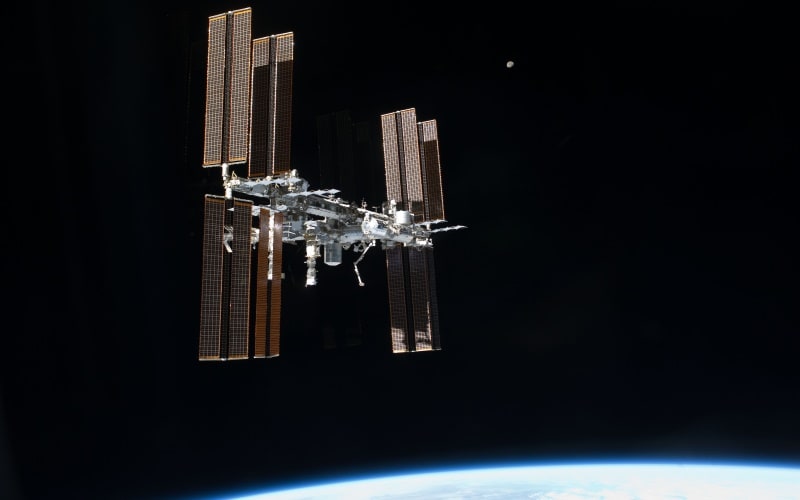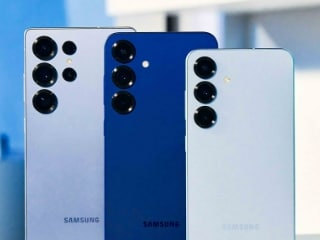- Home
- Laptops
- Laptops News
- HPE's Super Computer Brings 'Cloud' to Astronauts Aboard ISS
HPE's Super Computer Brings 'Cloud' to Astronauts Aboard ISS

Photo Credit: NASA
A super-computer at the International Space Station aims to bring "cloud" computing to astronauts in space and speed up their ability to run data analysis in orbit, Hewlett-Packard Enterprise said Thursday.
A SpaceX cargo capsule delivered the equipment, known as The Spaceborne Computer, to the space station in August 2017.
After more than a year of tests, HPE says it is ready to bring the cloud experience to astronauts for the first time - a kind of "cloud" above the clouds, as it were.
"We've completed all the requirements of our original one-year agreement. It's been successful and we can open it up," HPE technology officer Mark Fernandez told AFP.
A super-computer is essentially a group of computers that work together.
The one on the ISS contains 32 "cores" and is similar to the kind HPE sells on Earth. It is 30 to 100 times faster than an iPhone or tablet, Fernandez said.
NASA needed to know that any super computer it purchased would be able to function in the harsh environment of space, amid microgravity, radiation and occasional power outages. The HPE product stood up to all the tests.
The goal is for astronauts to be able to run their scientific analysis in space, without transmitting the data to Earth first.
Currently, the connection between space and the Earth can be slow and unreliable. The connection is often lost, and there may be a gap in communication lasting several seconds or more.
Fernandez said the new computer aims to upgrade the experience - currently a bit like relying on an old, dial-up modem.
"It is slow, it is intermittent and it has high latency," he said.
With the new system, "I'll have lower latency to move my data, I'll have higher bandwidth to move my data. I won't have any loss of signal to get my data down to Earth, and I'll be much more reliable."
On a future journey to Mars, millions of miles away, communication delays could last 20 minutes or more.
So testing such super computers in space, at a relatively close distance of 250 miles (400 kilometres) above the Earth, could help develop future deep space computers.
The Spaceborne Computer will be tested by scientists for just a few months, then sent back to Earth in February or March.
Get your daily dose of tech news, reviews, and insights, in under 80 characters on Gadgets 360 Turbo. Connect with fellow tech lovers on our Forum. Follow us on X, Facebook, WhatsApp, Threads and Google News for instant updates. Catch all the action on our YouTube channel.
Related Stories
- Samsung Galaxy Unpacked 2025
- ChatGPT
- Redmi Note 14 Pro+
- iPhone 16
- Apple Vision Pro
- Oneplus 12
- OnePlus Nord CE 3 Lite 5G
- iPhone 13
- Xiaomi 14 Pro
- Oppo Find N3
- Tecno Spark Go (2023)
- Realme V30
- Best Phones Under 25000
- Samsung Galaxy S24 Series
- Cryptocurrency
- iQoo 12
- Samsung Galaxy S24 Ultra
- Giottus
- Samsung Galaxy Z Flip 5
- Apple 'Scary Fast'
- Housefull 5
- GoPro Hero 12 Black Review
- Invincible Season 2
- JioGlass
- HD Ready TV
- Laptop Under 50000
- Smartwatch Under 10000
- Latest Mobile Phones
- Compare Phones
- Realme P4x 5G
- OnePlus Ace 6T
- OPPO A6x 5G
- Samsung Galaxy Z TriFold
- Poco F8 Ultra
- Poco F8 Pro
- Huawei Mate 80 RS Master Edition
- Huawei Mate 80 Pro Max
- Asus ProArt P16
- MacBook Pro 14-inch (M5, 2025)
- Poco Pad M1
- Poco Pad X1
- Just Corseca Skywatch Pro
- Honor Watch X5
- Acerpure Nitro Z Series 100-inch QLED TV
- Samsung 43 Inch LED Ultra HD (4K) Smart TV (UA43UE81AFULXL)
- Asus ROG Ally
- Nintendo Switch Lite
- Haier 1.6 Ton 5 Star Inverter Split AC (HSU19G-MZAID5BN-INV)
- Haier 1.6 Ton 5 Star Inverter Split AC (HSU19G-MZAIM5BN-INV)

















